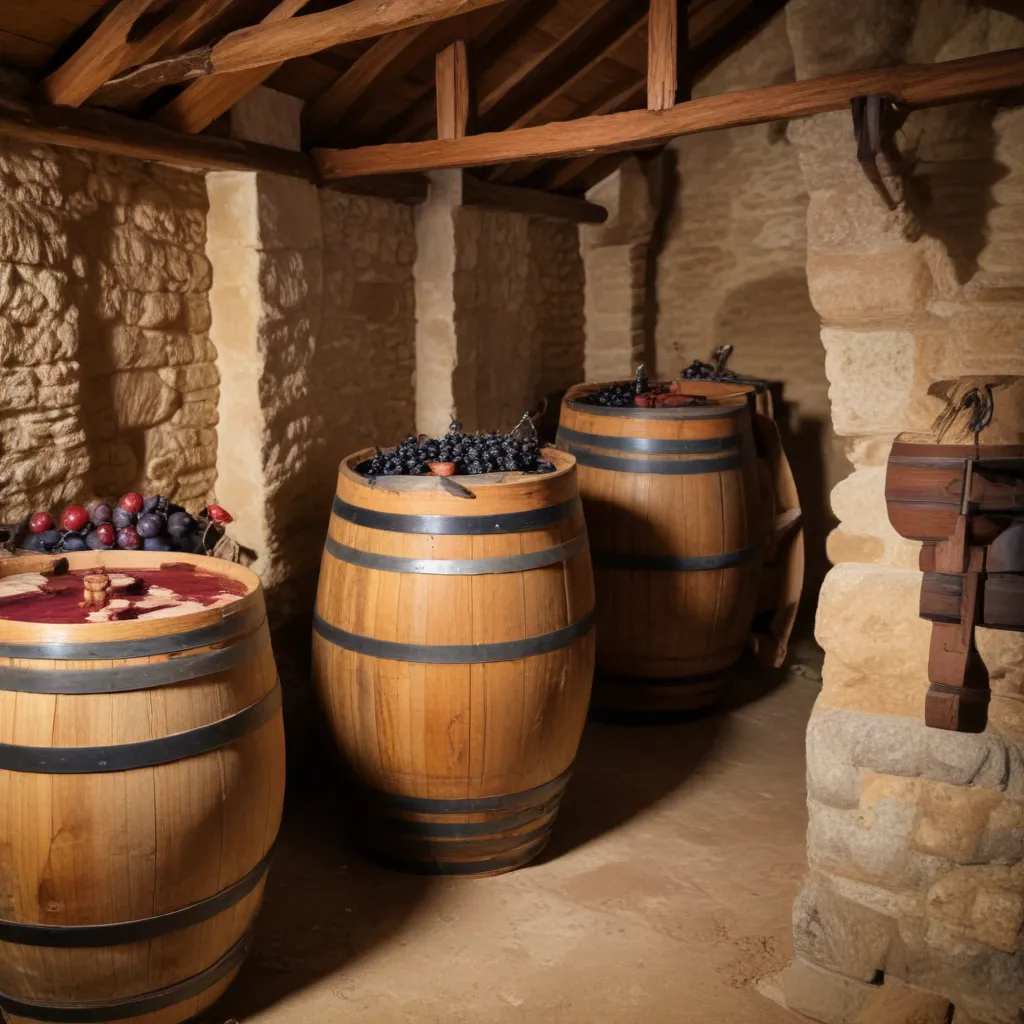
The art of winemaking has captivated humanity for millennia, weaving a rich tapestry of traditions, innovations, and geographical influences. From the ancient winemaking practices of the Caucasus region to the technological advancements that have revolutionized the modern industry, the evolution of viticulture is a fascinating journey worth exploring.
Historical Overview of Winemaking
Ancient Winemaking Practices
While the origins of wine can be traced back as far as 6,000 BC in the South Caucasus, the dawn of winemaking likely predates the domestication of grapes. Early hominids and primate species may have enjoyed the intoxicating effects of fermented fruits, and the discovery of wild Eurasian grapes (Vitis vinifera sylvestris) likely sparked the first intentional winemaking efforts.
The Paleolithic hypothesis suggests that our ancestors stumbled upon the wonders of wine by chance, as they gathered wild grapes and the weight of the fruit crushed some, allowing the natural yeasts on the skins to ferment the juice. This accidental discovery eventually led to more deliberate grape pressing, marking the birth of the world’s oldest alcoholic beverage.
Classical Winemaking Traditions
As civilizations developed across the Mediterranean and Western Asia, winemaking practices evolved to meet the demands of growing populations and religious rituals. The Ancient Greeks and Romans played a pivotal role in the dissemination of viticulture, introducing grapes and winemaking techniques throughout Europe. However, their wines were often diluted with water and supplemented with additives like sea salt, herbs, and even lead, resulting in a very different flavor profile than the wines we enjoy today.
Medieval Winemaking Advancements
During the Middle Ages, the Catholic Church emerged as a dominant force in winemaking, with monasteries overseeing the cultivation of vineyards and the production of wine. These ecclesiastical institutions were instrumental in developing innovative techniques, such as the use of oak barrels for aging and the introduction of the malolactic fermentation process. The monks’ dedication to their craft laid the groundwork for many of the winemaking practices we recognize today.
Technological Innovations in Winemaking
Emergence of Modern Equipment
As the scientific understanding of fermentation and chemical processes advanced, the winemaking industry underwent a profound transformation. The introduction of modern equipment, including temperature-controlled fermentation tanks, precision-controlled presses, and efficient bottling lines, allowed winemakers to achieve greater consistency and control over the final product.
Developments in Fermentation Processes
The advent of selected yeast strains and a deeper comprehension of the intricacies of fermentation enabled winemakers to fine-tune the flavors and aromas of their wines. The ability to monitor and manipulate factors like pH, acidity, and residual sugar levels has empowered vintners to craft more balanced and complex wines.
Automation and Precision Control
The integration of advanced technologies, such as satellite imagery, robotic harvesters, and smart storage systems, has revolutionized the winemaking industry. These innovations allow for more efficient monitoring of vineyard health, precise harvesting, and meticulous control over the storage and transportation of wines, ensuring quality and consistency from grape to glass.
Geographical Influences on Winemaking
Old World Winemaking Regions
The traditional winemaking regions of Europe, often referred to as the “Old World,” have a rich history and a strong emphasis on terroir – the unique expression of a wine’s place of origin. Countries like France, Italy, and Spain have cultivated distinct grape varietals and honed their winemaking techniques over centuries, leading to the development of renowned appellations and prestigious wine styles.
New World Winemaking Regions
In contrast, the “New World” winemaking regions, such as the United States, Chile, Argentina, and Australia, have embraced a more experimental and innovative approach. Freed from the constraints of tradition, these regions have introduced new grape varieties, pushed the boundaries of winemaking techniques, and crafted bold, fruit-forward wines that have gained global recognition.
Climate and Terroir Considerations
The diversity of climates and microclimates across the world has profoundly shaped the character of wines. From the cool-climate Rieslings of Germany to the full-bodied Cabernet Sauvignons of Napa Valley, each region’s unique combination of soil, temperature, and precipitation has left an indelible mark on the wines it produces. As the effects of climate change become more pronounced, winemakers are adapting their practices to maintain the distinctive qualities of their terroir.
Sustainability in Winemaking
Organic and Biodynamic Practices
In recent years, there has been a growing movement towards more sustainable and environmentally conscious winemaking practices. Many wineries have embraced organic and biodynamic farming methods, reducing the use of synthetic pesticides and herbicides in favor of holistic, earth-friendly approaches. These practices not only benefit the environment but also contribute to the expression of a wine’s true terroir.
Water Conservation Strategies
As water scarcity becomes an increasingly pressing global concern, winemakers are implementing innovative strategies to conserve this precious resource. From the use of drip irrigation systems to the adoption of dry farming techniques, the industry is leading the charge in sustainable water management, ensuring the long-term viability of their vineyards.
Waste Management and Recycling
Winemaking itself generates a significant amount of waste, from grape pomace to cork and glass. Savvy wineries are finding ways to repurpose these byproducts, turning them into compost, biofuel, or even novel products. This circular approach to resource management not only reduces environmental impact but also contributes to the overall sustainability of the industry.
The evolution of winemaking techniques is a testament to humanity’s ingenuity, our deep connection to the natural world, and our relentless pursuit of perfection. From the serendipitous discovery of fermented grapes to the cutting-edge technologies that shape today’s vintages, the story of wine is one of continuous growth, adaptation, and a profound appreciation for the art of crafting a truly exceptional libation. As we raise our glasses, we honor the countless generations of winemakers who have paved the way, and we eagerly anticipate the innovations yet to come. To learn more about Wine Garden Inn and our own winemaking journey, we invite you to explore our website and plan your visit to our picturesque estate.
